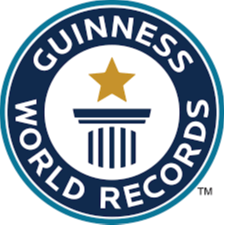My Body Won't Stop Making Milk!
89K views
Dec 11, 2023
Elisabeth Anderson-Sierra (USA) has donated thousands of litres of her own breastmilk to the Tiny Treasures Milk Bank of Duarte, California, USA, which helps support premature infants.
View Transcript
0:00
Over the last nine years, I estimate my total donation numbers to be over
0:05
350,000 ounces. I would not wish this condition on my worst enemy. It is... it is
0:14
not fun. This is what I would pump in a day. That's a lot of milk. It's like the
0:19
best feeling ever and it lasts for only minutes before my body starts making
0:26
milk again. Nobody wants to live like this. Like nobody wants to live like this
0:32
at all. How many individual babies have benefited from my milk? That is, first of
0:43
all, impossible to know. The milk bank I donated to, they specifically take
0:49
donated breast milk and create a breast milk product that is for preemies and
0:56
micro preemies. So babies that have just reached that viability and something has
1:05
happened where they were born far too early. They are not developed enough at
1:11
all to be able to tolerate a man-made substance formula. It's too hard on their
1:18
digestive system. They don't thrive. They don't survive. So this breast milk
1:24
product is essentially a prescription. It is literally saving their lives. My body
1:31
creates a lot of the hormone called prolactin and that is what drives milk
1:36
production. So in the morning, all of my pump sessions are my largest and usually
1:43
when I start pumping you might be able to see that the milk looks a little blue
1:49
and this is what's called four milk. It's the milk that comes out first. It's
1:55
usually higher in sugar and then later during a pumping session more of the
2:00
hind milk will come out and that's the fattier, it's kind of fattier portion of
2:07
the milk and I use a pitcher to mix all of the milk together so that it all has
2:14
the same nutrients, the same makeup. Hyperlactation syndrome is technically a disability and I feel like we had to adapt just as anyone else would with any
2:27
disability. First of all, everything was new to me so everything was a learning
2:33
curve, everything was a struggle, everything was painful. I think that it
2:38
has not only affected me but it has affected my family as well especially in
2:44
the beginning when we couldn't go anywhere, we couldn't do anything. I
2:48
always had to stick to this pump schedule and I always had to be home to
2:52
do it but over the years and of course with the new technology that I am
2:58
involved in I've been able to regain a lot of that freedom and I really try not
3:04
to be held back. This is the little workhorse that allows me to live my life
3:12
with this condition of hyperlactation. This little guy has given me my freedom
3:18
back, the ability to do anything while pumping, be as mobile as I want while
3:25
pumping instead of being glued to an outlet or a chair. Every weekday morning
3:32
I drive my girls to school and it is maybe about a 30-minute round-trip drive
3:41
so it's perfect for a pumping session. The standards that are put in place to be
3:48
able to donate to our most vulnerable humans are very high, the standards are
3:56
incredibly high and for very good reason. So every day I have to get all of my
4:05
milk together that I have pumped and I need to mix it all because it separates
4:12
the fat, rises to the top and the heavier water or the for milk part of
4:18
the breast milk settles to the bottom. So I mix it and then I start to like package
4:26
the milk or portion it out before I make what I call a milk brick which is 14
4:33
bags of milk inside a gallon Ziploc bag. It's 6 ounces per bag so it's an 84
4:41
ounce brick. I never let any breast milk go to waste it's all used or donated. So
4:50
this milk right here is very special. After giving birth for a very short
4:55
amount of time your body creates what's called colostrum. So this very I would
5:01
call like limited edition colostrum is what I can send to recipients with
5:07
brand spanking new babies. This would be a normal amount for a mom to pump or
5:16
express after giving birth. My body after giving birth produced this amount. I work
5:26
with a lot of recipients that their child has been given that label failure
5:33
to thrive. Being able to turn that around and that label removed in so many
5:43
different stories has just been everything to me and why I can continue
5:50
doing what I do. Elizabeth has been a huge blessing to our family. It was
5:57
during COVID and my milk could not come in yet in the hospital and they were
6:02
gonna send us home with formula and we really wanted to breastfeed him. She
6:07
dropped everything and came to our house and sat for a couple of hours with us
6:13
taught me how to pump properly. Unfortunately my milk never fully came
6:18
in so we just continue with the donor milk from her. I can't you know imagine
6:26
raising our boys without her help of donor milk. I definitely respect and
6:32
acknowledge the sacrifice that Elizabeth and her family makes on a daily basis
6:37
and we sincerely appreciate all that she does and we're really honored to know
6:46
her. Will I ever stop? Yes. I don't think that this is sustainable. I think that
6:56
the physical toll, the mental toll, over time it continues to stack up and nobody
7:05
wants to live like this. Like nobody wants to live like this at all. There are
7:10
medications available to combat the prolactin hormone. These medications do come with some pretty serious side effects. Another option that I have is
7:22
potentially looking into a double mastectomy to remove all of the glandular tissue that is producing breast milk. I think right now my current
7:34
goals are to make sure that my son has enough breast milk and then from there I
7:41
think the most promising option for me would be to get a double mastectomy. My
7:50
wife Elizabeth, what she does with her donations and milk production is
7:57
something that's very it's very important towards you know reaching a certain goal and helping children. She puts a lot of effort and love into it so
8:07
it's something that I completely and fully support of her. My record only takes
8:12
into account what I've donated to a milk bank and not all of the other donations
8:18
that have taken place locally or worldwide to recipients. I am really
8:24
hopeful that breaking this record and kind of sharing my story will normalize
8:31
milk sharing
#Family & Relationships
# Health Conditions
# Reproductive Health
# Women's Health


